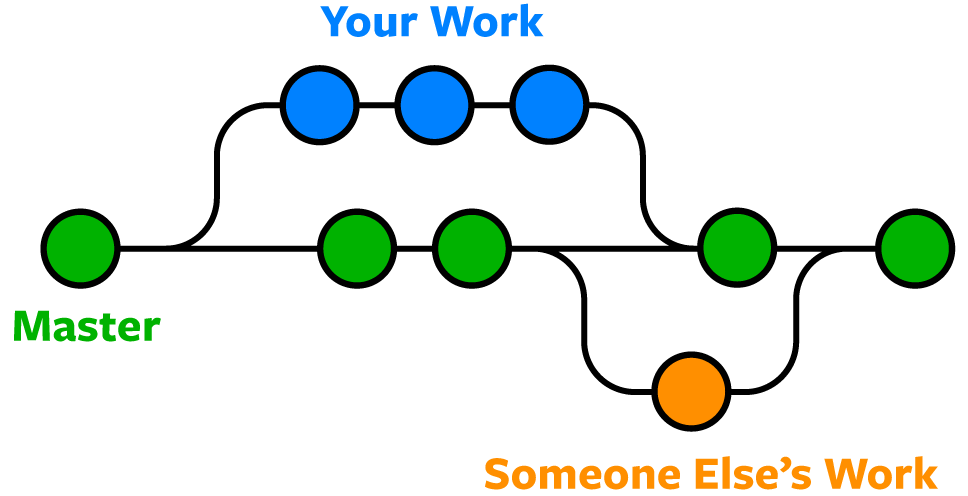### What is Git?
Git is a distributed version control system designed to track changes in source code during software development. It allows multiple developers to collaborate on a project, managing changes efficiently and ensuring version control. Here are some key points about Git:
1. **Version Control:**
Git helps in managing different versions of a project by tracking changes made to files. It stores a complete history of modifications, enabling developers to revert back to previous versions if needed.
2. **Distributed System:**
One of the key features of Git is its distributed nature. Each developer has a local copy of the entire project repository, allowing them to work offline and independently. Changes can be shared with other team members by pushing and pulling from remote repositories.
3. **Branching and Merging:**
Git enables developers to create branches to work on specific features or fixes without affecting the main codebase. Branches can be merged back into the main branch once the changes are complete.
4. **Collaboration:**
Git facilitates collaboration among teams by providing tools for sharing code changes, resolving conflicts, and reviewing code. Developers can work on the same project simultaneously without interfering with each other’s work.
5. **Security and Integrity:**
With Git, changes to the project are cryptographically signed, ensuring data integrity and verifying the authenticity of contributors. This helps in maintaining the security of the codebase.
6. **Open Source:**
Git is an open-source system, which means it is free to use and can be customized according to specific project requirements. It has a large and active community of developers who contribute to its continuous improvement.
Overall, Git revolutionized the way developers manage and collaborate on software projects, providing a reliable and efficient version control system that is essential for modern software development workflows.

### Why Use Git
Git is a popular version control system that offers several key advantages for developers and teams working on software projects. Here are some compelling reasons why Git is widely used in the software development industry:
1. **Collaboration:** Git facilitates seamless collaboration among developers working on the same project. Multiple team members can work on different parts of a codebase simultaneously and merge their changes easily.
2. **Version Control:** One of the primary reasons for using Git is its robust version control capabilities. Git allows developers to track changes made to the codebase over time, revert to previous versions if needed, and maintain a detailed history of all modifications.
3. **Branching and Merging:** Git’s branching and merging features enable developers to create separate branches to work on new features or bug fixes without affecting the main codebase. Once the changes are tested and verified, they can be merged back into the main branch.
4. **Distributed Development:** Git is a distributed version control system, which means that each developer has a complete copy of the repository on their local machine. This allows for offline work, faster access to project history, and greater resilience in case of server failures.
5. **Flexibility:** Git is highly flexible and can be easily integrated with other tools and services commonly used in software development workflows. This flexibility makes it suitable for a wide range of projects and environments.
6. **Open Source:** Git is an open-source tool maintained by a large community of developers. This not only ensures its continuous improvement but also provides access to a wealth of resources, tutorials, and extensions that enhance its functionality.
7. **Performance:** Git is known for its speed and efficiency in handling large codebases and repositories. Its lightweight branching model and local repository structure contribute to its exceptional performance even with complex projects.
In conclusion, Git offers a powerful set of features that streamline the development process, improve collaboration, and help maintain code quality and project integrity. Its popularity and widespread adoption by developers worldwide make it an essential tool for modern software development practices.
### How to Use Git
Git is a powerful version control system that allows you to efficiently manage your codebase and collaborate with others. Here are some common tasks and commands to help you get started with using Git:
1. **Setting Up Git**
– Install Git on your machine by downloading and following the installation instructions from the official Git website.
– Configure your name and email address that will be associated with your Git commits using the following commands:
“`
git config –global user.name “Your Name”
git config –global user.email “youremail@example.com”
“`
2. **Initializing a Repository**
– To start version controlling a project, navigate to the project directory and initialize a Git repository using:
“`
git init
“`
3. **Adding and Committing Changes**
– Add changes to the staging area by using:
“`
git add
“`
– Commit the staged changes with a descriptive message using:
“`
git commit -m “Your commit message”
“`
4. **Branching and Merging**
– Create a new branch to work on a feature or bug fix with:
“`
git checkout -b
“`
– Switch between branches using:
“`
git checkout
“`
– Merge changes from one branch to another using:
“`
git merge
“`
5. **Checking Status and History**
– View the status of your working directory and staging area with:
“`
git status
“`
– See the commit history using:
“`
git log
“`
6. **Collaborating with Remote Repositories**
– Add a remote repository URL for your project with:
“`
git remote add origin
“`
– Push your local changes to the remote repository with:
“`
git push origin
“`
– Pull changes from the remote repository to your local repository using:
“`
git pull
“`
By following these steps and commands, you can effectively use Git to manage your project’s version control and collaborate with other developers efficiently.


